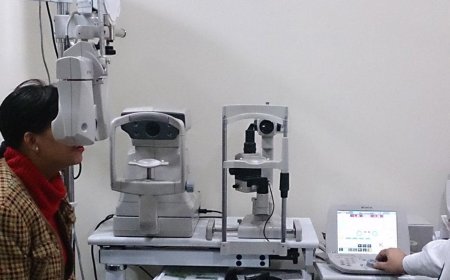The 10-Step Guide to Getting Your Visa Without the Headache
Learn how to get your visa approved stress-free with this 10-step guide. From preparing an Invitation Letter for Visa to securing a NOC Letter for Visa, we've got you covered!

Getting a visa can feel overwhelming, but it doesn’t have to be. By following a clear, step-by-step process, you can save yourself time, stress, and confusion. Whether you're traveling for work, study, or leisure, this guide will walk you through the essentials to make your visa application process smooth and hassle-free.
1. Understand the Type of Visa You Need
Before you begin, determine the specific type of visa you require. Is it a tourist visa, work visa, student visa, or a business visa? Different visas have distinct requirements, so knowing which one you need will set you on the right path.
- Check the official website of the country’s embassy or consulate to identify the visa category.
- Some visas might require an Invitation Letter for Visa, especially for business or family visits. Ensure you know what applies to your situation.
2. Gather All Necessary Documents
Start by creating a checklist of the documents required for your visa application. The standard list usually includes:
- A valid passport with blank pages.
- Completed visa application form.
- Passport-sized photographs that meet the specific size and background requirements.
- Supporting documents like proof of finances, travel itinerary, and insurance.
3. Prepare an Invitation Letter If Required
If you’re visiting someone, an Invitation Letter for Visa might be mandatory. This letter should include:
- The inviter’s details (name, address, contact information).
- Your purpose of visit and intended duration of stay.
- Assurance that the inviter will take responsibility for your accommodation and expenses if applicable.
Ensure the letter is signed and, if possible, notarized for added authenticity.
4. Get Your Financial Documents in Order
Embassies often require proof that you can financially sustain yourself during your trip. Prepare:
- Recent bank statements (usually covering 3–6 months).
- Payslips or income tax returns.
- Sponsorship documents if someone else is funding your trip.
5. Secure a NOC If Necessary
In some cases, you might need a NOC for Visa or NOC Letter for Visa to confirm that your employer or institution has no objections to your travel.
- If you’re a student, request a NOC from your school or college.
- If you’re employed, your HR department can issue this letter stating your leave dates and confirming that your job will remain secure.
This document reassures visa officials of your intentions to return to your home country.
6. Schedule Your Appointment
Once your documents are ready, book your visa appointment. Some embassies allow walk-ins, but most require you to schedule a specific date and time.
- Choose a date well in advance of your travel plans to allow for processing delays.
- Double-check your documents before heading to the appointment. Missing paperwork can result in rescheduling and delays.
7. Prepare for the Visa Interview
Certain visa types, especially work and student visas, may require an in-person interview. Prepare for this by:
- Reviewing your application and supporting documents.
- Practicing answers to common questions, such as the purpose of your visit, your financial status, and your travel plans.
- Dressing formally to create a good impression.
Stay confident and ensure your answers align with the information in your documents.
8. Pay the Visa Fee
Visa applications usually come with a processing fee. Make sure you know:
- The exact amount you need to pay.
- Accepted payment methods (online, cash, or card).
Keep the payment receipt safe, as you may need it during your application or interview.
9. Track Your Application
After submitting your application, you’ll likely receive a reference number. Use it to track the status of your visa.
- Check online or contact the visa center for updates.
- Some countries offer SMS or email notifications to keep you informed.
Patience is key during this stage, as processing times vary depending on the visa type and destination.
10. Collect Your Visa and Double-Check It
Once your visa is approved, collect it from the embassy or visa center. Carefully check the following details:
- Your name and passport number.
- Visa type and validity dates.
- Entry conditions (single or multiple entries).
If you spot any errors, contact the embassy immediately for corrections.
Pro Tips for a Hassle-Free Visa Application
- Start Early: Begin the process at least 2–3 months before your travel date to account for delays.
- Stay Organized: Keep all your documents in a folder and carry photocopies for backup.
- Be Honest: Misrepresenting facts can lead to a visa denial and future bans.
- Seek Professional Help: If the process feels overwhelming, consider hiring a visa consultant for guidance.
Conclusion
Applying for a visa can be daunting, but breaking it down into manageable steps makes it less stressful. From preparing an Invitation Letter for Visa to securing a NOC Letter for Visa, understanding the requirements and planning ahead are key to a successful application.
With patience, preparation, and attention to detail, you can navigate the process with ease and look forward to your upcoming journey. So, follow this guide, check off each step, and soon you’ll have your visa in hand, ready to explore the world.
What's Your Reaction?














![Noots Focus Reviews [Truth Exposed 2025]!](https://news.bangboxonline.com/uploads/images/202501/image_430x256_678e3b94881a1.jpg)
![Vivalis Male Enhancement: The Must-Know Ingredients [2025 Update]](https://news.bangboxonline.com/uploads/images/202501/image_430x256_678e3b54e396c.jpg)






